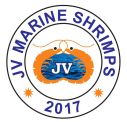jvmarine2017@gmail.com View Mobile Number
- Send SMS Send Email
Various Harvesting Methods For Tiger Shrimp Seeds
Posted by Admin on May, 28, 2024

Shrimp's great appeal and mouthwatering flavor have kept it a luxury good. Shrimp is a high-protein snack that has gained popularity recently and is expensive on the global market. Due to its rising significance, prawns were overfished, which abruptly reduced the natural population. Therefore, it is now essential to raise prawn species that are significant to the global economy. Continue reading to learn more about one such species i.e. tiger shrimp seeds.
About Tiger Shrimp
Tiger shrimp is an aquaculture species with the quickest rate of growth. It is commonly found in Bangladesh, India, and a few other countries. Since P. monodon is euryhaline, it can survive in almost freshwater environments. Salinity levels between 10 and 25 ppt are thought to be ideal. Its temperature tolerance is from 12°C to 37.5°C.
Of the 29 penaeid prawns that have been identified, P. monodon is the one that is farmed the most. It thrives in environments where it may be confined, grows quickly, and has a hardy character. It can withstand variations in temperature, oxygen, and salinity better. Tiger shrimps are naturally abundant in seeds, have a high market value, and have significant export potential.
Techniques For Growing Tiger Prawns
Tiger shrimp seed suppliers in Tamil Nadu use one of the following techniques to grow tiger shrimp seeds.
1. Reduced Stocking Density
This method can cut the harvest volume by 20–30%. However, due to larger size and better feed conversion, the harvest value can rise by 8%–10%. 20% less food and nutritional loading is used, and opportunistic illness risk is also decreased.
2. Enhancement of Bottom Management in Ponds
This may result in higher expenses for tilling or plowing, as well as the building of net cages. These expenditures may be recouped from the sale of the additional fish production. However, the quality of the water effluent and the bacterial profile of the sediment are both improving. It is possible to lower the pathogenic Vibrio count.
3. Harvest Rotation
While fish culture can yield some revenue, a single prawn harvest could prove to be a loss. Crop rotation eventually slows down the decomposition of organic waste. It lowers the levels of Vibrio bacteria and white spots.
4. Enhancing Feed Quality
Better feed quality increases nutritional value and reduces nitrogen and phosphorus emissions in the diet. Probiotics can also be used by farmers.
5. Reducing Infections and White Spots
The risks associated with white spot infections and lethal Vibrio are minimized for farmers who stock laboratory-screened fry. It might lead to expenditures of fry analysis, screening, and waiting for results.
Conclusion
In aquaculture, the highly prized early post-larval stage of Penaeus monodon is known as tiger prawn seed. These tiny prawns are raised in dedicated hatcheries, and have a length of 1-2 cm. Profitable prawn growing operations require high-quality and easily accessible tiger prawn seeds.
Tiger shrimp seed suppliers in Tamil Nadu employ various strategies for a consistent supply of high-quality, healthy seeds. For the seeds to develop as best they can, grow-out ponds require correct handling and acclimatization.
Search
Category
Recent Posts


Leave a Comment